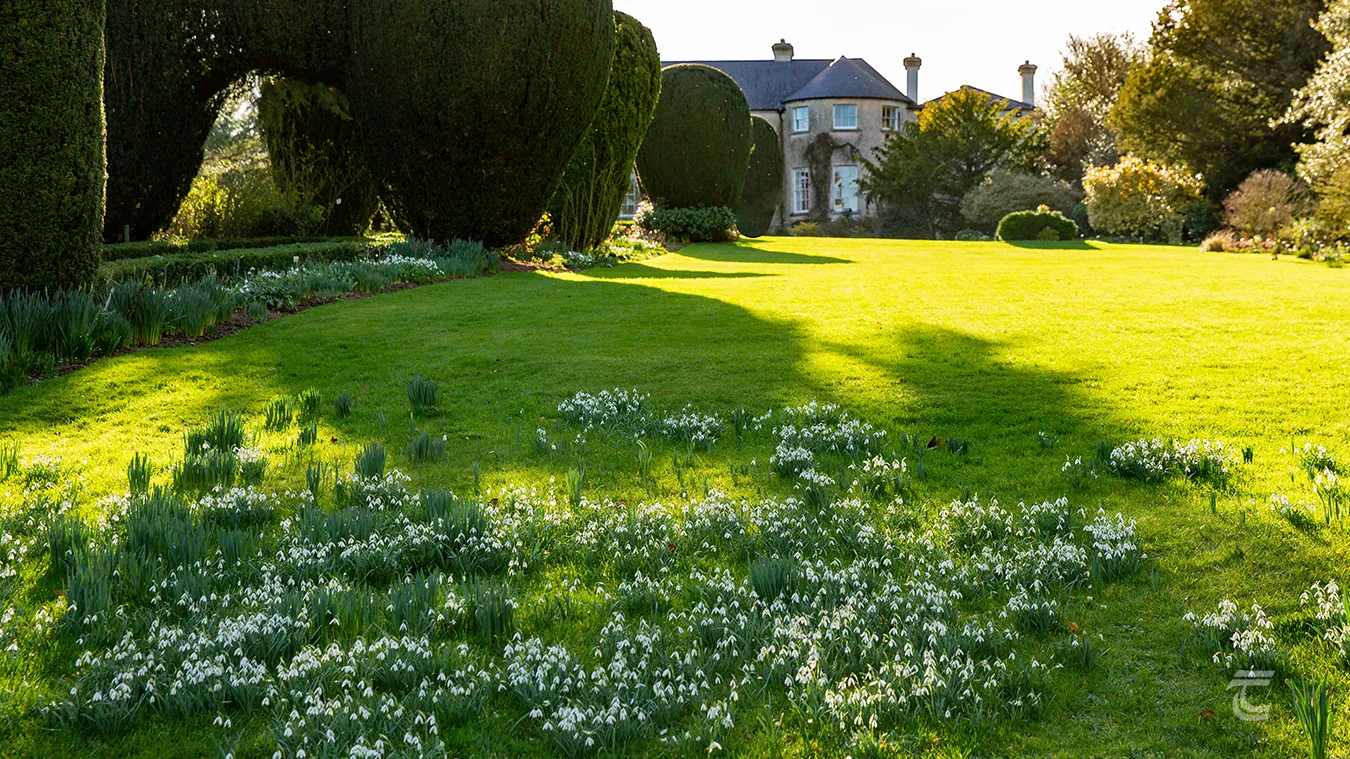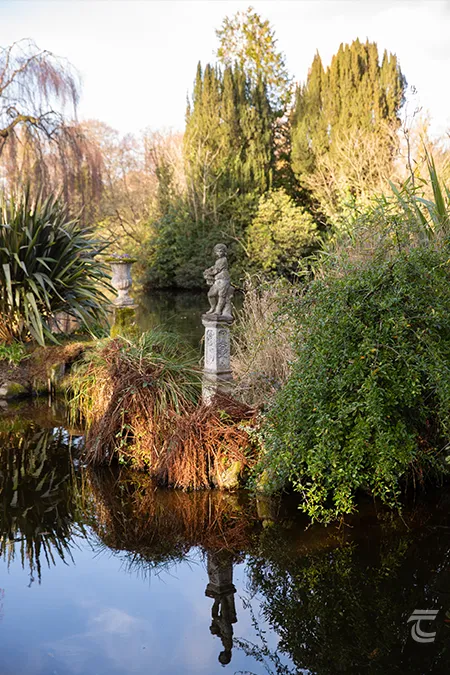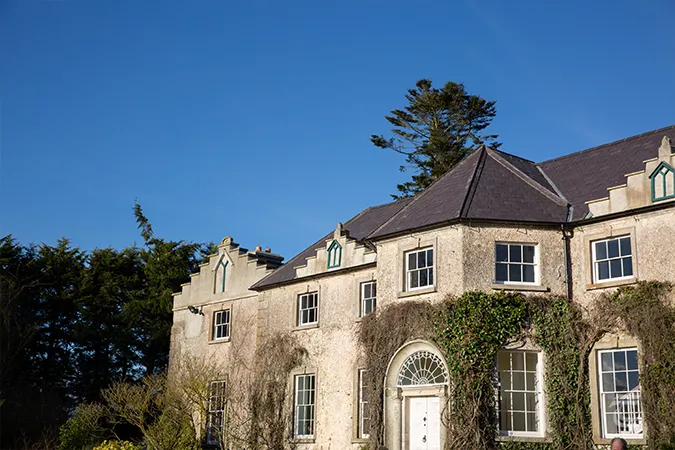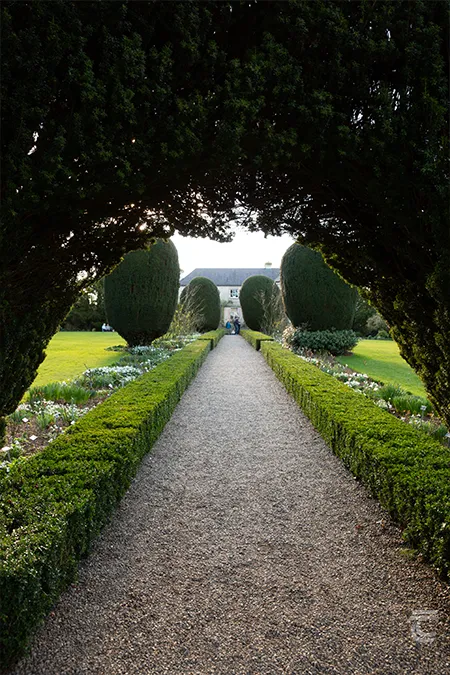Altamont Gardens
In recent years Altamont Gardens has become a very popular place for visitors and locals alike, with people flocking to see the elegant gardens and to enjoy the walking trails around the lake. Unfortunately, there is little information about the early origins of Altamont House itself. It is believed to have been constructed in the first half of the 18th century in its current form, when it was known as Rose Hill House. Though there are suggestions that the house incorporates, or at least stands on the site of, an earlier building. There are references to a medieval nunnery that once stood here. Though the Archaeological Inventory of County Carlow records that the ‘earliest portion of house distinguishable from later additions (early 18th century and later) by massive walls, in which one gun loop is still visible’. The thick walls certainly suggests a potential medieval date for this part of the house, though the presence of a gun loop sounds an unlikely feature for a nunnery. Though perhaps they had rowdy neighbours! The description sounds more along the lines of a fortified house of some description, though this fortified house may also stand on an earlier site, leaving the origins of the house as an intriguing puzzle to ponder. Altamont House is a detached seven-bay, two storey house with a polygonal bay to the front and a bow to the rear. It was extended to the sides in the late 19th century (see the National Inventory of Architectural Heritage). The handsome doorway with its doric style and fanlight were also added in the 19th century.
Sadly the house today is kept closed up, it is hoped that it might be one day restored and opened, as Doneraile Court was in recent years in County Cork. The house today reflects fine Georgian architecture with a number of additions and alterations that reflect the changing tastes and ideals of the resident family over time. A number of families are associated with Altamont, including the St Georges, the Doyles, and the Borrors, and each left their mark on the house and gardens.
For practical information about visiting this site Click Here
In recent years Altamont Gardens has become a very popular place for visitors and locals alike, with people flocking to see the elegant gardens and to enjoy the walking trails around the lake. Unfortunately, there is little information about the early origins of Altamont House itself. It is believed to have been constructed in the first half of the 18th century in its current form, when it was known as Rose Hill House. Though there are suggestions that the house incorporates, or at least stands on the site of, an earlier building. There are references to a medieval nunnery that once stood here. Though the Archaeological Inventory of County Carlow records that the ‘earliest portion of house distinguishable from later additions (early 18th century and later) by massive walls, in which one gun loop is still visible’. The thick walls certainly suggests a potential medieval date for this part of the house, though the presence of a gun loop sounds an unlikely feature for a nunnery. Though perhaps they had rowdy neighbours! The description sounds more along the lines of a fortified house of some description, though this fortified house may also stand on an earlier site, leaving the origins of the house as an intriguing puzzle to ponder. Altamont House is a detached seven-bay, two storey house with a polygonal bay to the front and a bow to the rear. It was extended to the sides in the late 19th century (see the National Inventory of Architectural Heritage). The handsome doorway with its doric style and fanlight were also added in the 19th century.
Sadly the house today is kept closed up, it is hoped that it might be one day restored and opened, as Doneraile Court was in recent years in County Cork. The house today reflects fine Georgian architecture with a number of additions and alterations that reflect the changing tastes and ideals of the resident family over time. A number of families are associated with Altamont, including the St Georges, the Doyles, and the Borrors, and each left their mark on the house and gardens.
For practical information about visiting this site Click Here

A snowdrop speckled lawn leads to Altamont House • Carlow
Altamont Gardens Today

A statue in the lake • Altamont Gardens
In 1924 the property was purchased by Feilding Lecky Watson, who had previously worked as a tea planter in Ceylon (now Sri Lanka). In the course of that work he had developed a keen interest in plants, particularly rhododendrons. At Altamont, Watson added to the already established gardens with the planting of his beloved rhododendrons, that thrived in the Carlow soil.
When Feilding Lecky Watson died in 1943, it was his daughter Corona (named after her father’s favourite species of rhododendron) that inherited the house and gardens. She worked for more than fifty years. When she died, she left the Altamont estate to the people of Ireland, and it is now managed by the Office of Public Works. Altamont Gardens are a real delight, and extend over some 40 acres of land alongside the River Slaney. You can see tall conifers that were planted in the 19th century, magnolias and Japanese maples, along with the ubiquitous rhododendrons that so delighted the Watsons. The centrepiece of the gardens is the large lake, fringed with mature trees and hidden nooks offering a new vista around every corner. The creation of the man-made lake was part of a programme of works that was initiated by the Doyles to provide work during the years of the Famine. There are a number of trails to enjoy around the gardens, including the Bog Garden, the Ice Age Glen, and the arboretum. The variety of planting means that Altamont Gardens offers something special all year round. Early spring is particularly lovely with great swathes of forty different variety of snowdrops in bloom, the summer is a riot of colour with the rhododendrons, the autumn colours are magnificent and the quiet solitude of the winter offers much too. It has become a very popular spot for visitors, especially at weekends, so if you plan on a lovely Sunday walk it is well worth arriving early. The tea rooms and the plant sales in the old walled garden can be especially popular, and after all that inspiration it is hard not to leave with at least a few additions for your own gardens.

A statue in the lake • Altamont Gardens
Upper left: Altamont House • Lower left: snowdrops in full bloom • Right: a path through the box hedging
Top: Altamont House • Middle: a path through the box hedging • Bottom: Altamont snowdrops in full bloom
Altamont Gardens Visitor Information
The elegant Altamont Gardens in Carlow are lovely at any time of year, but especially so in early Spring when swathes of snowbells bloom.




